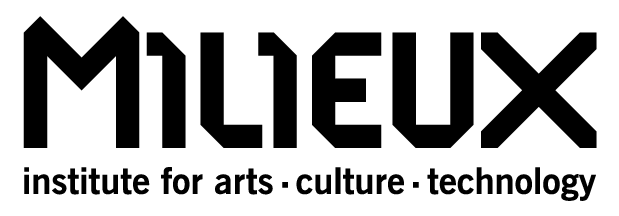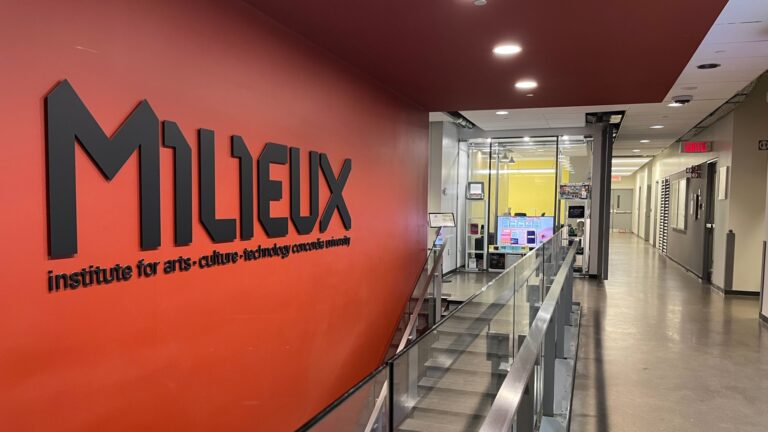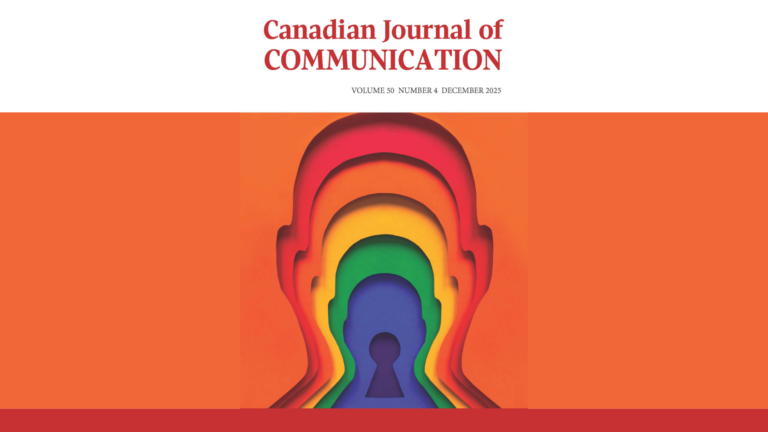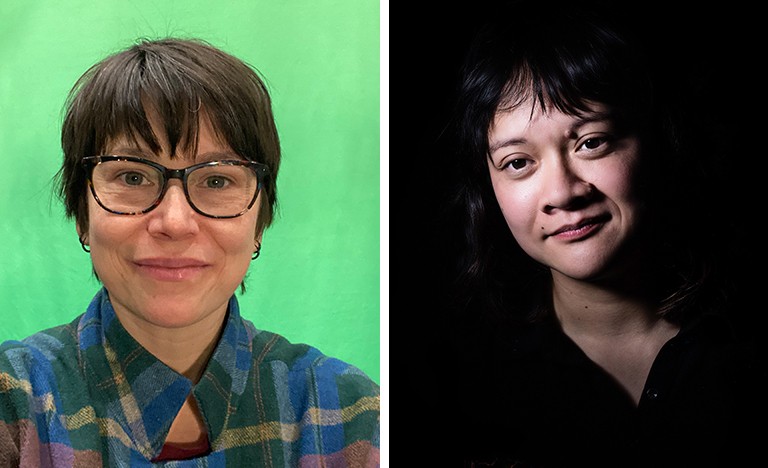“I wanted to just be a part of that space.”
That was computational arts undergraduate Kamyar Karimi’s initial reaction to discovering TAG, the Technoculture, Art and Games cluster at Milieux Institute. Karimi found the cluster online, seeking avenues at Concordia for advancing his skillset.
Karimi asked Associate Professor Jonathan Lessard how he could be a part of TAG as an undergraduate student. The answer was Milieux’s undergraduate fellowship initative which opens up the Institute – typically a hub for graduate research – to ambitious undergrads.
Every year, Milieux’s clusters nominate up to two undergrads as fellows. The fellowship comes with an honourarium and membership of Milieux, providing resources for each fellow to work on a particular research project. As Milieux welcomes the 2024-25 cohort, previous fellows reflect on the program’s impact.
Karimi began his fellowship in the winter semester of 2024 – and over the course of the following year, found himself branching off into avenues he hadn’t expected.
“Milieux opened the door,” he says. He worked with Lessard in TAG as a programmer for a game project called Chroniquer, but also found himself exploring beyond the bounds of his designated cluster.
He answered a call-out for a residency with the Generative AI Studio, an initiative of the Speculative Life cluster, and jumped into new territory.
Karimi spent his summer learning and exploring alongside graduate students, developing a generative AI project that would eventually exhibit at Montreal’s MUTEK Festival.


“I was the only undergrad person which was intimidating,” Karimi says. That experience, though, encouraged him to push the boundaries of his work.
He had never used generative AI before, but successfully adapted a previous art project to involve machine learning, calling it Deconstructed Selfies: Regenerated. Karimi’s MUTEK installation had participants sit in front of a camera, with an AI model then dissecting their image in the frame, probing the notion of digital identity.
“Having the pressure of presenting at MUTEK with a lot of big names around – that pressure also gave me some sort of professional rigour,” he muses. “My academic vocabulary improved because I had to read a lot more, I had to frame what I was saying. In many senses it was very rewarding.”
Malte Leander, sound artist and current coordinator of the LePARC cluster, remembers having a similar feeling during his undergraduate fellowship.
He describes his experience, in 2021-2022, as both humbling and inspiring.
“I was an undergraduate student and these were – a few Master’s students – but mostly PhD students doing profound academic research work.”
An electroacoustics student, Leander had been working on a prototype of a solar-powered synthetic insect, meant to bring insect sounds back to places like parking lots, where they had been stamped out. As it happened, Milieux had recently launched a Solar Media Collective, a cross-cluster research group led by Janna Franzel and Lee Wilkins.


As part of the collective, Leander attended workshops led by Wilkins and gained conceptual and technical insights from other participants who were more experienced in solar power and electronics. “It was a great context to learn from,” Leander remembers.
Bart Simon, Milieux Director, explains that since the start of Milieux there have always been undergraduates like Karimi and Leander – keen to get research experience, but needing a formal mechanism.
“There were undergraduates that were basically operating at a graduate level with their research and their abilities,” he says. The fellowship served as an acknowledgment of those students, giving them permission to enter a graduate space – and hopefully de-mystifying it along the way.
Since the first cohort in 2017, the Institute has welcomed over 70 UG Fellows, many of whom have gone on to graduate work. Saskia Kowalchuk, UG Fellow in 2019-2020 with Speculative Life, went on to complete an MA in Media Studies at Concordia. Jason Sikoak, a UG Fellow with the Indigenous Futures Research Cluster in 2019-2020 is now pursuing a Master’s and exhibited at Concordia’s Fofa Gallery in 2024.
Simon says the UG fellows are often some of Milieux’s most engaged members. They encourage others to join, bringing a fresh perspective to research activities. “And an energy which is unmatched,” he adds, laughing that perhaps the undergrads haven’t quite yet been worn down by life.
That undergrad enthusiasm also comes from the excitement of discovering new ideas and approaches.
Leander exhibited his Lumo Bug prototype at the end of year exhibition, ‘In the Middle, a Chimera,’ and has since continued to develop an artistic and scholarly practice that explores combining ecological thinking with sound art. The Solar Media Collective, he says, formed a building block towards his current work.
Beyond the particulars of his project, the fellowship also gave Leander hands-on experience with research-creation, an approach he had previously heard professors describe in classrooms. That experience was crucial on both a knowledge level and an emotional one, helping him to build his confidence.
“Approaching my own interests in sound-making and defining these processes as artistic research really validified and strengthened my approach.”
Karimi, like Leander, expanded his understanding of his own practice through the fellowship.
“When I started university, I feel like I had a clearer idea of what I wanted to do than I do now,” Karimi says. “I’ve been exposed to so many things.” Once motivated primarily by games, Karimi now thinks of himself as an inter-disciplinary artist, and says his goal is to develop a trans-disciplinary practice.
“For me, trans-disciplinary would be a practice that I have tailored down, that uses these media toward a specific discipline of who Kamyar is, what he does.”
In that sense, Milieux’s inter-disciplinary nature has been especially encouraging. “You walk around Milieux and you’re like, most people…have multiple interests and they’ve been able to hone what they want to focus on,” he says.
That Milieux has a physical space for UG fellows to stroll through makes a big difference. The interconnectedness of Milieux clusters – their physical proximity, their intellectual overlaps – made it possible for both Karimi and Leander to explore, following a thread outside their home clusters, arriving at new settings for engagement.
Leander encourages incoming fellows to do the same.
“Not all the activities that you are partaking in or activating in Milieux have to be bullseye exactly the thing that you’re trying to develop,” he suggests to the 2024-25 cohort. Instead, try new things, build different skillsets, and you might find yourself growing in parallel to your existing interests.
“It’s such a great space to add on tools in the toolbox.”
Meet the incoming 2024-25 Undergraduate Fellows this Wednesday, January 29.
Announcing Milieux Institute’s 2024-25 Undergraduate Fellows
– Rosie Long Decter, Milieux Storyteller



